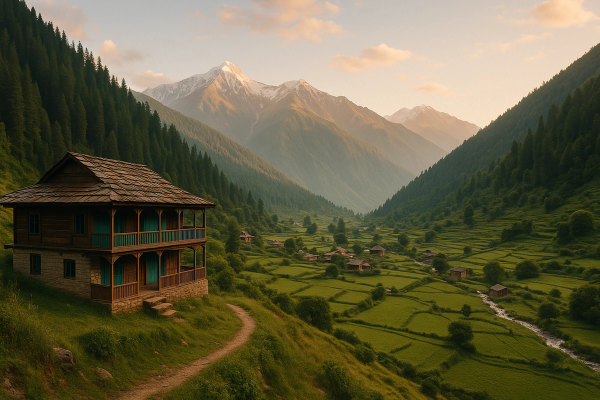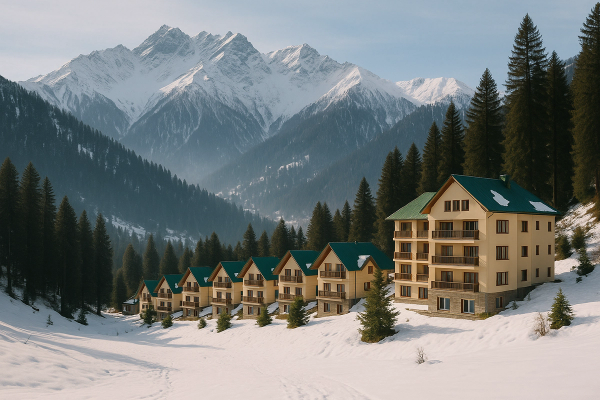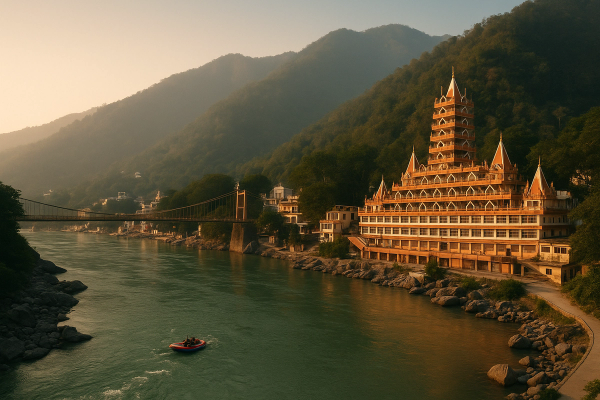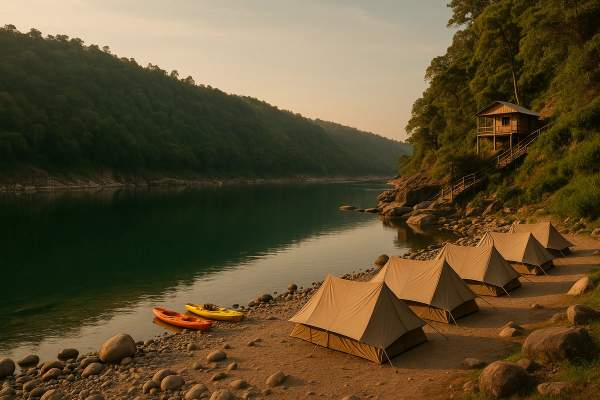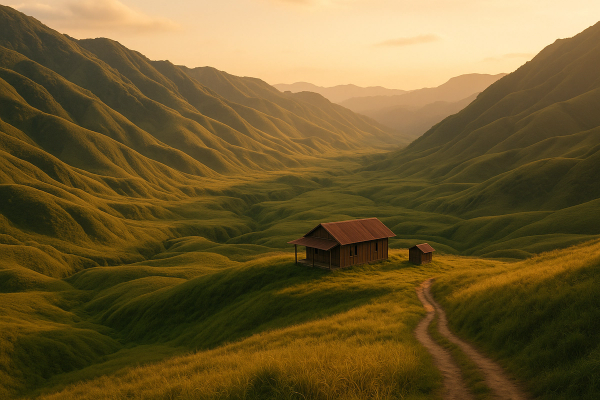Okay, Let's Talk Banff: Seriously Unreal Lakes & Mountains#
So, picture this: I'd seen the photos, right? Those crazy blue lakes? But honestly, scrolling Instagram is nothing like standing there, breathing in that crisp mountain air, and seeing Lake Louise or Moraine Lake with your own eyes. It’s… a lot. In the best way. I finally made the trip to Banff National Park in the heart of the Canadian Rockies, and wow. Just wow. If you're thinking about planning a trip to see Banff's turquoise lakes and maybe tackle some alpine trails, you're in the right place. This is basically my brain dump of everything I learned, kinda like a friend telling you the real deal. Consider this your slightly chaotic but hopefully helpful Banff travel guide.¶
We'll cover the big stuff – when to go, where to stay, those famous lakes (and how to actually see them without losing your mind), and some amazing Banff hiking. Because honestly, getting out on the trails is where the magic really happens. Stick around, it's gonna be good. Oh, and yeah, it's in Alberta, Canada, for anyone wondering!¶
What's the Big Deal About Banff Anyway?#
Alright, quick lowdown. Banff is Canada's oldest national park, established way back in 1885. It's smack dab in the middle of the Canadian Rockies in Alberta. Think towering, jagged mountains, glaciers hanging on for dear life, thick pine forests, and yeah, those ridiculously coloured lakes. The water gets that Gatorade-blue look from 'rock flour' – tiny particles of silt ground up by glaciers, suspended in the water. Science, but it looks like magic, tbh.¶
The main town, also called Banff, is cute but can get crazy busy. It's surrounded entirely by the park, which is pretty unique. It's got history, sure, but mostly people come for the epic nature. It's basically an outdoor playground.¶
When Should You Go? Let's Be Real About Seasons#
Choosing when to visit Banff is kinda crucial. It dramatically changes the vibe, the costs, and what you can actually do. Here’s my take:¶
Summer (June - August): Peak Sunshine & Peak Crowds#
This is prime time. The weather's usually warmest, the days are long, and most importantly, the lakes are thawed and showing off that insane turquoise colour. All the hiking trails should be snow-free (higher elevations might still have patches in early June). Sounds perfect, right? Well...¶
- Pro: Best chance for warm weather and fully thawed, vibrant lakes. Everything is open.
- Con: Crowds. Like, seriously intense crowds, especially at Lake Louise and Moraine Lake. Accommodation prices skyrocket, and you need to book everything (hotels, shuttles, some tours) months in advance. Parking is a nightmare.
My experience in July: Glorious sunshine, but trying to get a photo at Moraine Lake without 50 other people in it? Forget about it unless you go super early... like, really early.
Fall (September - October): The Golden Ticket?#
Okay, September is kinda my jam for Banff. The summer crowds start thinning out (a bit!), the weather can still be amazing (crisp, sunny days), and you get the bonus of the Larch trees turning golden yellow, usually mid-to-late September. It's stunning. October gets colder, snow can start falling, and some seasonal roads/services close, but it's quieter.¶
- Pro: Fewer crowds than summer, beautiful fall colours (especially the larches!), decent weather potential in early fall.
- Con: Weather is more unpredictable, shorter days, things start closing down later in the season. Lake Louise and Moraine Lake access roads usually close mid-October.
Winter (November - March): Snowy Wonderland#
If you're into skiing, snowboarding, ice skating on frozen lakes (like Lake Louise!), or just cozy vibes, winter is magical. It's a totally different park.¶
- Pro: Gorgeous snowy landscapes, world-class skiing (Sunshine Village, Lake Louise Ski Resort, Mt. Norquay), fewer non-skiing tourists, potential for Northern Lights.
- Con: It's COLD. Many hiking trails are inaccessible or require snowshoes/ice cleats. Moraine Lake road is closed. Driving can be sketchy.
Spring (April - May): The Awkward Phase#
Honestly, spring is probably the trickiest season. It's the 'shoulder' season for a reason. Lakes are likely still frozen or just starting to thaw (meaning they look kinda grey/slushy, not turquoise). Lower elevation trails might be muddy or icy, while higher ones are still snowbound. Weather is super variable.¶
- Pro: Fewer crowds, cheaper accommodation.
- Con: Unpredictable weather, messy conditions ('mud season'), lakes aren't at their peak beauty, many trails still closed.
| Season | Lake Colour | Hiking Access | Crowds | Costs | Vibe |
|---|---|---|---|---|---|
| Summer (Jun-Aug) | Peak Turquoise | Mostly Open | Very High | $$$$ | Busy, Vibrant |
| Fall (Sep-Oct) | Turquoise (early), then freezes | Good (early), starts closing | High -> Moderate | $$$ | Golden, Crisp |
| Winter (Nov-Mar) | Frozen/Snow-Covered | Limited (Snowshoe/Ski) | Low (except holidays) | $$ | Snowy, Cozy, Ski |
| Spring (Apr-May) | Frozen/Thawing (Grey) | Very Limited -> Lower trails open | Low -> Moderate | $$ | Melting, Muddy |
My pick? Early to mid-September. You dodge the worst crowds, get potentially great weather, see the larches... it's a winner. But July/August guarantees that lake colour if that's your #1 priority.
Getting There & Navigating Banff#
Okay logistics time. Getting to Banff is pretty straightforward. Getting around once you're there... requires a plan, especially in summer.¶
Flying In & Getting to Town#
You'll almost certainly fly into Calgary International Airport (YYC). It's the closest major airport, about a 1.5 to 2-hour drive to Banff townsite. Super easy drive, mostly highway.¶
- Rental Car: Gives you the most flexibility to explore the park, especially for reaching trailheads or viewpoints outside of town. Book way in advance for summer. Downsides: parking headaches and costs.
- Airport Shuttles: Companies like Banff Airporter or Brewster Express run frequent shuttles between YYC and Banff/Canmore/Lake Louise. Comfy, reliable, but less flexible once you're in the park. Cost is around $70-80 CAD one way.
Pro Tip: If you're relying on shuttles/tours, book them early. Especially the Parks Canada shuttles to Lake Louise and Moraine Lake – those spots are now restricted for personal vehicles most of the time.
Also, you NEED a Parks Canada Discovery Pass for your vehicle (or per person if arriving by bus) to enter the national park. You can buy it online in advance or at the park gates. Don't skip this, they do check!¶
Getting Around Inside the Park#
Once you're settled, how do you explore?¶
- Walking: Banff townsite itself is very walkable. You can easily get to shops, restaurants, the Whyte Museum, Bow Falls, and the Banff Gondola base (though it's a bit of an uphill walk).
- Roam Transit: Banff's local bus system is actually pretty great! It connects the town, the gondola, Tunnel Mountain campground, and even goes out to Canmore and Lake Louise. Reasonably priced and eco-friendly. Check their routes/schedules.
- Parks Canada Shuttles: Essential for Lake Louise and Moraine Lake in summer/fall as personal vehicle access is restricted. You HAVE to book these in advance online, and spots sell out fast. Seriously, plan this part.
- Driving: If you rented a car, great for accessing trailheads along the Icefields Parkway or Bow Valley Parkway. BUT... parking at popular spots like Johnston Canyon or Lake Minnewanka can fill up by 8 AM in summer. Go early or late.
- Biking: Renting a bike (or e-bike) is a fantastic way to explore areas like the Bow Valley Parkway (parts might be seasonally closed to vehicles) or the Legacy Trail between Banff and Canmore.
Where to Sleep: Banff vs. Canmore vs. Lake Louise#
Accommodation in Banff books up insanely fast and can be pricey. Like, really pricey in summer. You've got a few main options for where to base yourself:¶
Banff Townsite#
The heart of the action. Loads of hotels, restaurants, shops. Super convenient for walking around town and catching Roam Transit.¶
- Vibe: Bustling, tourist-focused, convenient.
- Pros: Everything's right there, good transport links.
- Cons: Can be very crowded and expensive. Parking can be tough.
- Options: Range from hostels (HI Banff Alpine Centre, Samesun Banff) to mid-range hotels (Banff Ptarmigan Inn, Moose Hotel & Suites) to luxury (Fairmont Banff Springs - the iconic castle!).
Canmore#
Just outside the park gates (about a 20-min drive from Banff). It's a 'real' town with more locals, great restaurants, and often slightly more affordable accommodation. Still stunning mountain views.¶
- Vibe: More relaxed, local feel, still tourist-friendly.
- Pros: Often better value for money, less chaotic than Banff town, great food scene.
- Cons: You'll need to drive or take Roam Transit into the park proper for most key sights.
- Options: Lots of condo-style hotels (great for longer stays/families), lodges, and B&Bs.
Lake Louise Village#
Tiny hamlet right near the famous lake. Limited options, mostly higher-end.¶
- Vibe: Quiet, focused on the lake and surrounding trails.
- Pros: Unbeatable access to Lake Louise and Moraine Lake (though you still might need the shuttle for Moraine!). Amazing hiking starts right there.
- Cons: Very few services (restaurants, shops), expensive, feels isolated.
- Options: Fairmont Chateau Lake Louise (iconic, pricey), Deer Lodge (historic, rustic), HI Lake Louise Alpine Centre (hostel option).
My two cents? If it's your first time and you want convenience, stay in Banff town but book MONTHS ahead. If you want slightly better value and a more relaxed vibe (and have a car), Canmore is awesome. Lake Louise is only worth it if you really want to splurge or be right at the lake.
The Main Event: Banff's Lakes & Hiking Trails#
Okay, this is why you came! The scenery is just stupidly beautiful. Prepare to have your camera roll explode.¶
Those Famous Turquoise Lakes#
- Lake Louise: The postcard child. Absolutely stunning with the Victoria Glacier backdrop. Walk the shoreline (easy, flat), rent a canoe (pricey, ~ $145/hr last I checked!), or hike up to viewpoints. Visit the Fairmont Chateau. Get there EARLY (before 8 am) or use the shuttle. Parking is basically impossible otherwise in peak season.
- Moraine Lake: My personal favorite, tbh. That Valley of the Ten Peaks view from the Rockpile? Chef's kiss. IMPORTANT: Personal vehicles are BANNED in 2023 onwards. You must use the Parks Canada shuttle, Roam Transit, bike, or a commercial tour. Book shuttles the moment they become available (usually in the spring). Worth the hassle? 1000% yes.
- Peyto Lake: Further up the Icefields Parkway (about 40 mins from Lake Louise). Famous for its wolf-head shape. There's a newly renovated viewpoint platform that's easily accessible from the parking lot. Gets busy, but the view is unreal.
- Lake Minnewanka: Close to Banff town. Huge lake, offers boat tours (highly recommend the cruise!), canoeing, kayaking, picnicking. Nice scenic drive loop.
- Emerald Lake: Okay, technically this is in Yoho National Park right next door, but it's SO worth the detour (about 20 mins west of Lake Louise). Stunning colour, beautiful lodge, nice easy walk around it.
Crowd Tip: Seriously, for Lake Louise & Moraine Lake, GO EARLY. Like, sunrise early if you can handle it. Or go late afternoon/early evening when day-trippers leave. Midday is peak chaos.
Hitting the Trails: Banff Hiking Guide (Mini Version)#
Getting out on foot is the best way to experience the Rockies. There are trails for literally every fitness level.¶
- Easy Peasy: Johnston Canyon (Lower Falls is paved, Upper Falls involves more stairs - go early to avoid catwalk crowds!), Lake Agnes Teahouse (starts at Lake Louise, gentle uphill, ~7km round trip, reward yourself with tea!), Fenland Trail (flat loop near Banff town, good for a quick nature fix).
- Moderate Challenge: Plain of Six Glaciers Teahouse (continues past Lake Agnes or starts separately from Lake Louise shore, ~14km round trip, epic glacier views!), Sulphur Mountain Trail (switchbacks up beneath the gondola, ~11km round trip, save money on the gondola ride down maybe?), Tunnel Mountain (short but steep climb right in Banff town, great views).
- Hard Yakka (But Worth It!): Sentinel Pass via Larch Valley (starts at Moraine Lake, ~11km round trip, best during larch season - late Sept!), Cory Pass Loop (near Banff town, ~13km loop, VERY strenuous, for experienced hikers only), Devil's Thumb (via Lake Agnes, serious scramble, exposure, amazing views over both Lake Louise & Agnes).
Hiking Safety MUSTS: Always check trail conditions beforehand (Parks Canada website is essential!), tell someone your plan, carry layers (weather changes FAST), pack more water/food than you think you need, and CARRY BEAR SPRAY and know how to use it. Seriously. Make noise on the trail.
Food & Drink: Fueling Your Adventures#
Banff isn't exactly a world-renowned culinary capital, but you'll find plenty of decent options, especially for refueling after a long hike. Canmore generally has a slightly more interesting/local food scene, IMO.¶
What to Expect#
- Pub Grub: Lots of pubs offering burgers, fish and chips, nachos. Solid, reliable options.
- Canadian Staples: Look for Alberta beef (steaks!), maybe some game meat like bison or elk burgers.
- BeaverTails: Okay, it's a touristy pastry chain, but getting a hot, doughy BeaverTail covered in cinnamon sugar or other toppings is kinda a Canadian rite of passage. Find them on Banff Ave.
- Coffee Shops: Plenty of spots for your caffeine fix and a quick breakfast pastry. Evelyn's Coffee Bar is a local fave.
- Grocery Stores: Grab snacks, picnic supplies, or ingredients if you have a kitchen. Nesters Market and IGA in Banff town are your main options.
A Few Spots to Check Out (Banff Town)#
- The Eddie Burger + Bar: Popular spot for creative burgers and cocktails. Often busy.
- Bear Street Tavern: Known for its pizzas and cozy patio.
- Park Distillery Restaurant + Bar: Cool spot that distills its own spirits. Good food, neat vibe.
- Whitebark Cafe: Great coffee, located inside the Banff Aspen Lodge.
Honestly, pack snacks for hikes! A sandwich never tasted so good as it does with an alpine view. And bringing your own water bottle is a must.
Super Practical Banff Travel Tips#
Alright, let's get down to the nitty-gritty stuff.¶
Budgeting: It Ain't Cheap#
Banff can be expensive, no way around it, especially in summer. Here's a rough idea:¶
- Accommodation: Hostels ~$50-80 CAD/night, Mid-range ~$250-500+, Luxury $500-$1000+.
- Food: Budget ~$50/day (groceries/casual), Mid-range ~$100-150/day, Fancier ~$200+/day.
- Activities: Parks Pass ~$10.50/day/person or ~$145/year/vehicle. Gondola ~$60-70. Lake Louise canoe ~$145/hr. Shuttles ~$8-15 round trip. Hiking is free!
- Getting There: Flights vary wildly. Shuttle from Calgary ~$150 round trip. Rental car + gas adds up.
Money Saving Tip: Travel in the shoulder season (fall/spring), pack lunches/snacks, utilize free activities like hiking, stay in Canmore or a hostel, buy an annual Discovery Pass if staying >7 days or visiting other parks.
Packing Essentials#
- Layers, Layers, Layers: Seriously. Mountain weather changes fast. Bring t-shirts, fleeces, waterproof/windproof outer shell. Even in summer.
- Good Footwear: Broken-in hiking boots are essential if you plan to hike. Comfortable walking shoes for town.
- Rain Gear: A waterproof jacket is non-negotiable.
- Sun Protection: Sunscreen, sunglasses, hat. The sun is strong at altitude.
- Bug Spray: Especially needed near water in summer.
- Bear Spray: Buy it when you arrive (can't fly with it usually), carry it accessible on hikes, know how to use it. Better safe than sorry.
- Reusable Water Bottle: Stay hydrated!
- Camera & Portable Charger: Duh.
I forgot decent gloves once in September and my hands were FREEZING on an early morning hike. Don't be like me. Pack gloves/hat even if the forecast looks okay.
Safety & Etiquette#
- Wildlife: Never feed or approach wildlife. Keep a safe distance (use zoom!). Store food properly at campsites/picnic spots.
- Bear Safety: Make noise (talk, clap), hike in groups if possible, carry bear spray.
- Trail Conditions: Check reports before heading out. Let someone know your route.
- Leave No Trace: Pack out everything you pack in. Stay on marked trails.
- Altitude: Banff town is at ~1,383m (4,537 ft). Take it easy the first day, drink lots of water.
- Reservations: Book accommodation, popular tours, and lake shuttles well in advance, especially for summer/fall.
Sample Banff Itineraries (Loosely!)#
Okay, putting it all together. These are just ideas, mix and match based on your interests and energy!¶
The Banff Weekend Warrior (3 Days)#
- Day 1: Arrival & Banff Town: Arrive in Calgary, pick up car/shuttle to Banff. Check in. Explore Banff Ave, walk along the Bow River, maybe hike Tunnel Mountain for sunset views. Dinner in town.
- Day 2: The Big Lakes: EARLY start. Pre-booked shuttle to Moraine Lake (sunrise if possible!). Hike the Rockpile, maybe Consolation Lakes trail (easy). Shuttle/Roam Transit to Lake Louise. Walk the shore, hike to Lake Agnes Teahouse. Evening: Relax or Banff Upper Hot Springs.
- Day 3: Johnston Canyon & Bow Valley Parkway: Drive/Roam Transit to Johnston Canyon (go early!). Hike to Lower/Upper Falls. Drive part of the Bow Valley Parkway (check seasonal closures) looking for wildlife. Grab lunch in Banff/Canmore before heading back to Calgary.
The Banff Explorer (5 Days)#
Builds on the weekend, adding more hiking and exploring.¶
- Day 1 & 2: Similar to the weekend trip (Banff Town exploration, Moraine Lake & Lake Louise focus).
- Day 3: Gondola & Moderate Hike: Banff Gondola up Sulphur Mountain (or hike up!) for panoramic views. Afternoon: Choose a moderate hike like Plain of Six Glaciers or Sulphur Mountain trail (if you didn't hike up).
- Day 4: Icefields Parkway & Peyto Lake: Drive north on the stunning Icefields Parkway. Stop at Bow Lake, Peyto Lake viewpoint. Maybe hike Parker Ridge (moderate, amazing views) if time/conditions allow. Pack a lunch! Turn around or stay further north if time permits.
- Day 5: Canmore & Departure: Explore Canmore's downtown, maybe do the easy Grassi Lakes hike (check closures!). Enjoy a final mountain view brunch before driving back to Calgary.
Travel Kind: Being a Good Visitor in Banff#
Banff is stunning, but it's also a delicate ecosystem and faces huge pressure from tourism. Let's try not to wreck it, okay?¶
- Respect Wildlife: Keep your distance. Never feed animals (it harms them and can be dangerous). Store food securely.
- Stay on Trails: Don't cut switchbacks or wander off-path. It causes erosion and damages fragile alpine vegetation.
- Leave No Trace: Pack out everything – wrappers, tissues, apple cores, everything. Leave places better than you found them.
- Reduce Traffic: Use shuttles (Roam Transit, Parks Canada) whenever possible, especially for Lake Louise/Moraine Lake. Consider biking.
- Support Local: Choose local businesses when you can.
It sounds simple, but seeing trash left on trails or people getting way too close to elk... it's frustrating. Let's all do our part.
Final Thoughts: Is Banff Worth the Hype?#
Okay, final verdict? YES. Absolutely, 100% yes. Despite the crowds, despite the cost, Banff National Park is genuinely one of the most breathtaking places I've ever been. Standing by those lakes, hiking through those mountains... it just hits different.¶
My biggest piece of advice? Plan ahead. Especially for summer/fall travel. Book accommodation and those crucial lake shuttles EARLY. Embrace the early mornings to beat the crowds. And definitely, definitely get out on a hiking trail – even an easy one. That's where you'll really feel the magic of the Canadian Rockies.¶
So yeah, I hope this rambling Banff travel guide helps you plan your own adventure to this incredible corner of Alberta. You won't regret it. Now go see those turquoise lakes for yourself!¶
Have you been to Banff? Got any tips I missed? Share them below! Planning a trip? Feel free to ask questions or save this guide for later. Safe travels! (Maybe check out more Canada tips on my site too, if you're interested - just sayin' 😉)¶





